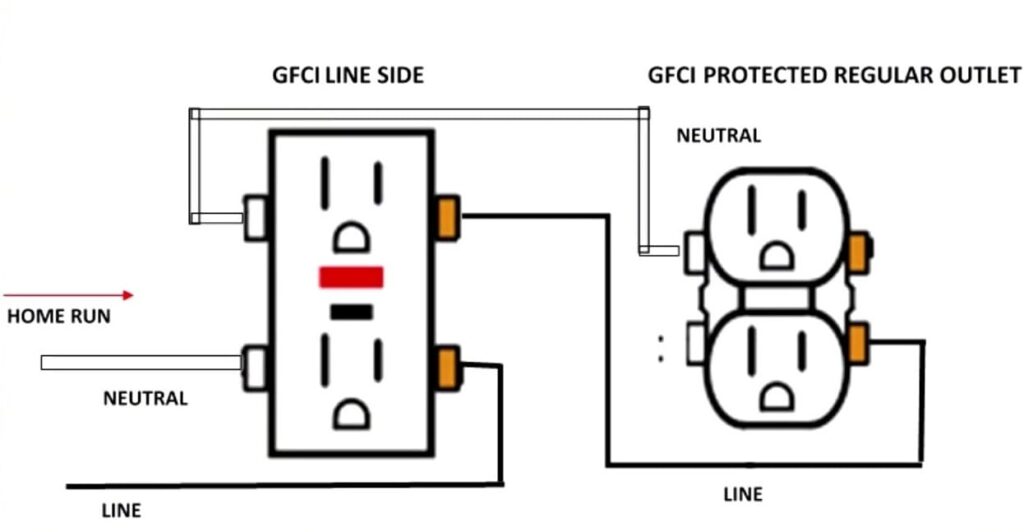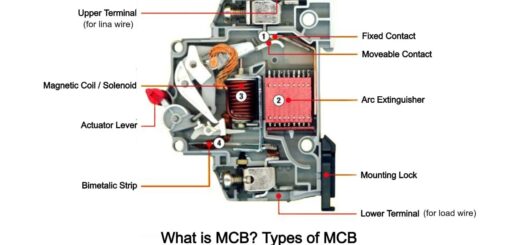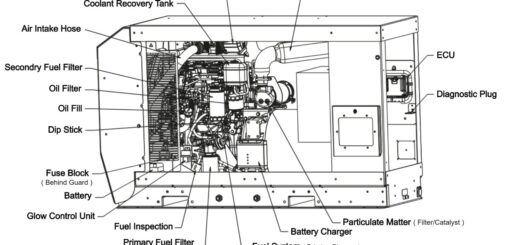What is a GFCI Outlet? | How to Install GFCI Outlet? | Where is a GFCI Required? | Wiring for GFCI Outlet

GFCI Outlet Introduction:
What is a GFCI Outlet? | How to Install GFCI Outlet? | Where is a GFCI Required? | Wiring for GFCI Outlet – One of the essential electrical gadgets in modern-day residential electrical systems is the GFCI. An appropriately installed GFCI can save lots of lives from electric shock, and other injuries which are related with power. We will look after GFCI, various sorts of GFCI Gadgets, normal GFCI Wiring, and furthermore the means associated with GFCI Outlet installation. A GFCI or Ground-fault Circuit Interrupter is a genuinely economical electrical device that detects ground faults and protects individuals from deadly electric shocks.
In a typical operation, when we plug an electrical gadget into an outlet or power source, the electricity flows from the hot wire into the gadget and subsequently from the device back to the power source through the neutral wire.
What is a GFCI Outlet?
A ground shortcoming circuit interrupter Outlet (GFCI outlet) is a protective device explicitly designed to break the circuit each time there is a disparity among incoming and outgoing current. The GFCI outlet safeguards electrical wiring from overheating and conceivable fire, incredibly restricting or confining limiting the risk of shock ventures and lethal burns. It likewise identifies ground faults and disrupts the flow of current yet ought not to be utilized to replace a fuse as it doesn’t offer protection against short circuits and overloading.
GFCI identifies such ground faults and opens the circuit immediately. To identify the ground faults, GFCI consistently monitors the current leaving the hot wire and furthermore the current returning through the neutral wire.
How does a GFCI Outlet Work?
diligently tracks the continuous flowing in a circuit to identify fluctuations. It has three holes: two of the holes are for neutral and hot wire and the third hole is in the power source which serves as a ground wire. Assuming it detects any change in the electrical flow in the circuit, it will quickly cut off the flow of electricity. Thusly, expecting you are utilizing a hair dryer for instance and it slips into a sink that is filled up with water, the GFCI outlet will rapidly detect the interruption and cut the power to guarantee electrical security in the washroom and beyond.
Where is a GFCI Required?
GFCI outlets are significant, particularly when the electrical outlets are positioned near water. Installing GFCI outlets in your kitchen, restrooms, laundry rooms, pool house, and so forth, is a good idea. Besides being an essential preventive measure, the law furthermore requires you to have GFCI outlets installed all throughout your home. As per National Electric Code (NEC), all homes should be outfitted with GFCI protection.
At first, it was only required for you to install GFCI outlets near water however this requirement has been extended to cover all single-phase outlets of 125 volts in recent years. GFCI outlets should moreover be installed on temporary wiring systems during constructional development, renovating and rebuild as well as maintenance of structure that are utilizing power for a brief time frame.
Wiring for GFCI Outlet

How to Install GFCI Outlet?
Installation is an essential parameter for installing any kind of appliance. Thus, installing GFCI Outlet incorporates, taking out the old standard repository, wiring the new GFCI receptacle and installing GFCI Outlet into the receptacle box. The process for GFCI Outlet installation is exceptionally simple. Everyone will understand and grasp the GFCI Outlet installation by taking a step-by-step strategic approach. In this multitude of steps, the user can expect that you are replacing an existing standard duplex outlet with a GFCI Outlet and simultaneously, and further assume that the old installation as of now has a receptacle box with all proper wiring.
Step 1
The first and critical step is to shut down the power to the circuit where you are installing the GFCI Outlet. In the wake of turning off the power (just flip the circuit breaker), you can test for electricity with the assistance of a circuit tester.
Step 2
After that, remove and eliminate the screw of the cover and furthermore take out the cover altogether. This will uncover you with the actual mounting screws of the old receptacle.
Step 3
In 3rd step, loosen both the mounting screws and cautiously remove the receptacle without touching any wires. Twofold checks for electricity in the wires with a circuit tester.
Step 4
After that, loosen the silver screws and disconnect all the neutral wires from the receptacle.
Step 5
Connect all the neutral wires utilizing a wire nut and pigtail one neutral wire. Connect or Associate this pigtail neutral wire to the white line terminal on the GFCI.
Step 6
In this step, disconnect or disengage every one of the black hot wires from the old receptacle and interface them using a wire nut. Additionally, pigtail hot wire.
Step 7
Connect or Interface to the hot pigtail wire to hot line terminal of the GFCI, which will be only inverse to the white line terminal.
Step 8
Remove or eliminate the bare ground wire from the old receptacle and connect it to the green grounding terminal of the GFCI. In the event that there is no grounding connection, mark this receptacle as “No Equipment Ground” for your reference.
Step 9
Wrap up every one of the wires carefully into the box and gradually embed the GFCI Outlet into the receptacle box. GFCI Outlet are secured and protected by utilization of mounting screws to the case firmly and determinedly.
Step 10
At the end, Reattach the cover plate and secure it with the screw. Turn on the power and test the new GFCI Outlet utilizing the TEST and RESET buttons (follow to manufacturer’s guidelines on the most proficient method to test).
Why Does the GFCI Outlet Trip and What to do when it Trips?
The ground fault circuit interrupter is essentially designed to avert ground flaws by immediately disturbing the flow or progression of current from the power source. To this why periodic testing is vital to ensure that the GFCI outlet is tripping consistently. In the event that the GFCI outlet is tripping frequently, it properly needs further investigation by a certified electrical technician as it could likewise be a consequence of worn-out insulation, accumulated dust, or deteriorated wiring.
Advantages of Installing GFCI Outlets
Below are some advantages of Installing GFCI outlets: –
A) Prevent Shocks
Electrical shocks and electrocution are significant dangers that you can be exposed to through electrical devices at your home. A GFCI outlet helps in forestalling shocks and electric shocks as it has a built-in sensor that monitors the inflow and outflow of the electricity from any appliance. In the event that a live wire inside the appliance comes with the metallic surface of the appliance, you will get a shock when you touch it.
In any case, in the event that you plug the appliance into the GFCI outlet or power source, it will notice accepting there is any change in the flow of electricity which might happen in view of a loose wire and it will in a flash shut down the power. They will be heavier on your pockets when compared to regular outlets, however, the safety benefit will definitely outweigh the expense impediment over the long haul.
B) Avoid Damage to Appliances
There is a decent opportunity that the insulation of an appliance will break over the long haul. On the off chance that not a break, there will surely be a couple of cracks in the insulation. Some measure of electric current starts to leak or spill through these cracks into the appliances and other electronic things. On the off chance that the appliance’s outer body isn’t metal, then, at that point, you won’t get a shock yet the constant leakage of the current will damage the equipment over the long haul.
In the event that it has a metal body, you will encounter electric shocks too. In any case, when you have an appliance damaged to the GFCI outlet, you can quit battling over your appliances getting damaged due to leaked current. The GFCI circuit will perceive the leak and shut down the circuit, which prevents electrical leaks from damaging costly equipment and appliances. You can save a lot of money by not having to replace or repair your damaged electrical gadgets.
C) Automatic Monitoring
A GFCI monitors the flow or progression of electricity through the outlet by means of a built-in sensor. The power source or outlet quickly responds to a change in electrical flow. It does this by sensing the difference in how much electricity which enters the circuit with that flowing out of it. Changes in current by only a couple of milliamps can be detected. It takes a portion of a second for the GFCI to respond by tripping or shutting off the entire circuit.
D) Avert Fatal Electrical Fires
One of the principal functions of a GFCI outlet is to detect ground faults, which happen when the flow of electrical current leave a circuit. They are responsible for causing electrical fires. At the point when you install GFCI outlets, you are preventing electrical fires from happening. You may argue or contend that electrical fuses also provide basic security and protection from electrical flames, regardless, when you combine them with GFCI outlets, the potential outcomes of electrical fires emitting and harming you and your friends and family will nearly decrease to nothing.
E) Immediately Identifiable
GFCI outlets vary in appearance from regular ones in that they regularly have built-in Test/Reset buttons. Pressing it allows you to restore electricity or test the outlet. A few models even have an indicator light. There are numerous configurations of GFCI outlets accessible. Other than the test/reset feature, indicator, and the ability to trip a circuit, they function equivalent to any standard outlet.
F) Protection no Matter what the Source of a Surge
The outlet or power source will trip whether a ground fault happens due to terrible wiring, the breakdown of the appliance, or the presence of water or dampness. Electrical surges can likewise be caused by static electricity. The GFCI can be triggered by a lightning strike too, so there is no risk of shock, fire, or electrocution during a storm. In case a GFCI outlet is set outside, it will in general be affected by water, snow, ice, and buildup as well as the spray from grass sprinklers and nursery hoses.
Conclusion
GFCI or Ground-fault Circuit Interrupter is a genuinely inexpensive electrical gadget that shields workforce from severe electric shocks. It detects ground faults with a leakage current as low as 5mA and trips the circuit open in under 1/25 second. As above we discuss a few basics of GFCI, the wiring styles of GFCI receptacles, and furthermore the steps for GFCI Outlet installation.
You ought to definitely install GFCI outlets, both at your home and workplace, fundamentally for security reasons. Make sure to get them installed exclusively by licensed electrical technicians and experts. You can’t put a cost on the safety of your loved ones and GFCI outlets will offer you a veritable serenity in that perspective.
Content Source: – dfliq, expresselectricalservices
Image Source: – zellnerelectric, Rayo Engineering













